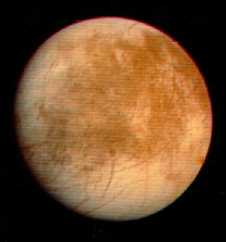This is an image of Europa
Click on image for full size
Courtesy of NASA
Icy Moon
Icy moons are moons which are
made of ice. These moons are unlike the earth's moon, which is made of
rock.
Perfect examples of icy moons are 3 of the Galilean satellites, Europa, Ganymede, and Callisto. Except maybe for Europa and Triton, these moons have no air.
But the surfaces of these moons, especially Ganymede, show proof that in their history, something may have happened inside which changed the way the moon looks today. Activity inside the moon could also provide an environment in which life could exist.
You might also be interested in:
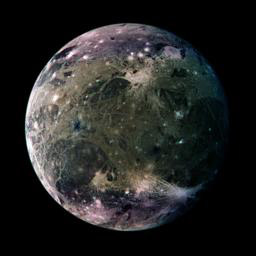
Ganymede was first discovered by Galileo in 1610, making it one of the Galilean Satellites. Of the 60 moons it is the 7th closest to Jupiter. It is the largest moon in the solar system, much larger than
...more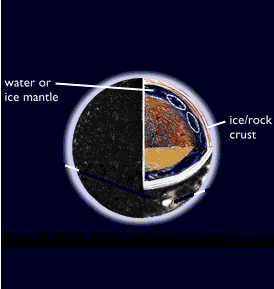
The diagram to the left shows a cutaway of the possible interior structure of an icy moon. The drawing illustrates what used to be postulated for Jupiter's moon Ganymede. Icy moons are mostly made of
...more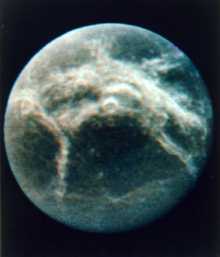
Dione was discovered by G. Cassini in 1684. Dione is the 7th farthest moon from Saturn. It is a small icy moon, lightly cratered, with white streaks across the surface. Dione is about as wide as the Oregon
...more
Rhea was discovered by G. Cassini in 1672. Rhea is the 5th farthest moon from Saturn. Rhea is one of the icy moons. Rhea is about as wide as the state of California is long. Rhea is has many craters and
...more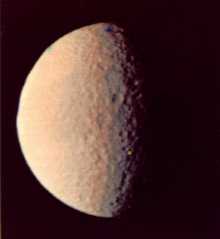
Tethys was discovered by G. Cassini in 1684. Tethys is the 8th closest moon to Saturn. Tethys is one of the icy moons. It is about as wide as the length of the Oregon coast. Tethys is has a surface, with
...more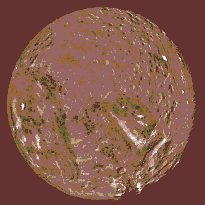
Miranda was discovered by G. Kuiper in 1948. Miranda one of the smallest icy moons, and is as wide as the distance from Los Angeles to San Francisco. The surface features of this moon are hard to see in
...more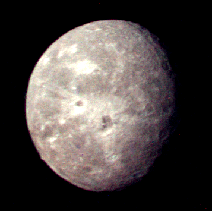
Oberon was discovered by W. Herschel in 1787. Oberon is about as wide as the state of California is long. Oberon is probably one of the icy moons.
...more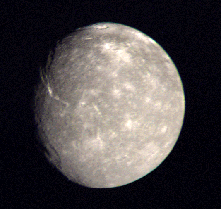
Titania was discovered by W. Herschel in 1787. Titania is about as wide as the state of California is long. The surface features of this moon are hard to see in this image. The surface suggests that Titania
...more


